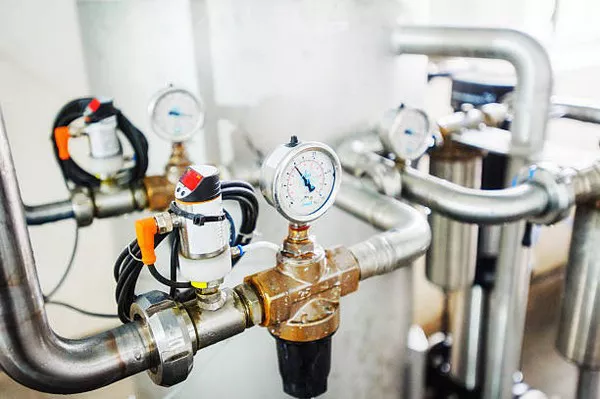In the realm of fluid dynamics and airflow measurement, hot wire anemometers (HWAs) stand as a beacon of precision and reliability. These instruments, based on the principle of convective heat transfer, are indispensable tools in various industries and scientific fields. In this article, we will delve into the fundamentals of hot wire anemometry, explore its wide-ranging applications, and discuss recent advancements in the field.
1. Principles of Hot Wire Anemometry
At the heart of a hot wire anemometer lies a delicate interplay between heat transfer and electrical resistance. The basic operation of an HWA can be summarized as follows:
a. Sensing Element: The core component of an HWA is a fine wire made of a material with a high temperature coefficient of resistance, such as platinum or tungsten. This wire is mounted in the airflow path to be measured.
b. Heating Circuit: The wire is electrically heated to a constant temperature using a heating circuit. By passing a controlled current through the wire, its temperature is maintained within a narrow range.
c. Measurement Circuit: As airflow passes over the wire, heat is convectively transferred away from it, causing a change in its resistance. A measurement circuit detects this change and converts it into an electrical signal proportional to the airflow velocity.
d. Calibration: To ensure accuracy, hot wire anemometers must be calibrated against known airflow rates under controlled conditions. This calibration establishes a relationship between the electrical output of the instrument and the actual airflow velocity.
2. Applications of Hot Wire Anemometry
The versatility and precision of hot wire anemometers make them indispensable in a wide range of applications across various industries:
a. HVAC Systems: In heating, ventilation, and air conditioning (HVAC) systems, HWAs are used to measure airflow rates in ducts, vents, and HVAC components. This data is crucial for optimizing system performance, ensuring adequate ventilation, and maintaining indoor air quality.
b. Aerospace and Automotive Engineering: In aerodynamics research, HWAs play a vital role in analyzing airflow around airfoils, wings, and vehicle bodies. This information is essential for designing efficient and aerodynamically optimized aircraft, automobiles, and other vehicles.
c. Environmental Monitoring: HWAs are employed in environmental monitoring applications to measure air velocity and direction in outdoor settings. This data is valuable for assessing wind patterns, studying microclimates, and monitoring air quality and pollution levels.
d. Turbomachinery Testing: Hot wire anemometers are used in testing and evaluating turbomachinery, such as turbines and compressors, by measuring airflow velocities within the equipment. This information aids in performance assessment, troubleshooting, and optimization of turbomachinery systems.
e. Boundary Layer Studies: Researchers use HWAs to study boundary layer flows in fluid dynamics experiments. By measuring airflow close to solid surfaces, they can investigate phenomena such as boundary layer separation, transition to turbulence, and aerodynamic drag.
3. Recent Advancements and Innovations
In recent years, advancements in technology have led to the development of more sophisticated hot wire anemometers with enhanced capabilities and features:
a. Miniaturization: Miniature hot wire anemometers have been developed for applications where space is limited or where measurements need to be taken in confined environments, such as inside electronic devices or microfluidic systems.
b. Wireless Connectivity: Integration of wireless communication capabilities allows hot wire anemometers to transmit data remotely, enabling real-time monitoring and control of airflow conditions from a distance.
c. Multichannel Systems: High-performance hot wire anemometer systems with multiple sensing elements have been developed to enable simultaneous measurement of airflow at multiple points. This is particularly useful for complex flow field analysis and turbulence studies.
d. Improved Sensing Materials: Advances in materials science have led to the development of new sensing materials with enhanced properties, such as higher temperature stability and greater resistance to corrosion, extending the operational range and lifespan of hot wire anemometers.
e. Computational Techniques: Integration of computational fluid dynamics (CFD) techniques with hot wire anemometry data allows for more comprehensive analysis of airflow behavior and its interaction with complex geometries, leading to deeper insights and more accurate predictions.
4. Considerations and Challenges
While hot wire anemometers offer numerous benefits, there are also considerations and challenges to be aware of:
a. Sensitivity to Environmental Conditions: HWAs are sensitive to changes in temperature, humidity, and pressure, which can affect their accuracy. Careful calibration and environmental compensation techniques are necessary to ensure reliable measurements.
b. Flow Disturbance: The presence of the sensing element itself can disturb the airflow being measured, particularly in low-velocity or laminar flow conditions. Proper sensor placement and design optimization are essential to minimize this effect.
c. Maintenance and Calibration: Regular maintenance and calibration are required to ensure the continued accuracy and reliability of hot wire anemometers. This includes periodic cleaning, sensor recalibration, and verification against reference standards.
d. Cost and Complexity: High-quality hot wire anemometers can be expensive, especially those equipped with advanced features. Additionally, their operation and interpretation of data may require specialized expertise, adding to the overall complexity.
Conclusion
Hot wire anemometers play a critical role in airflow measurement and analysis across various industries and scientific disciplines. Their ability to provide precise, non-intrusive measurements makes them indispensable tools for researchers, engineers, and technicians alike. With ongoing advancements in technology and instrumentation, hot wire anemometry continues to evolve, offering new possibilities for understanding and manipulating airflow in diverse applications. As we look to the future, hot wire anemometers will undoubtedly remain at the forefront of airflow measurement, driving innovation and advancing our understanding of fluid dynamics.

